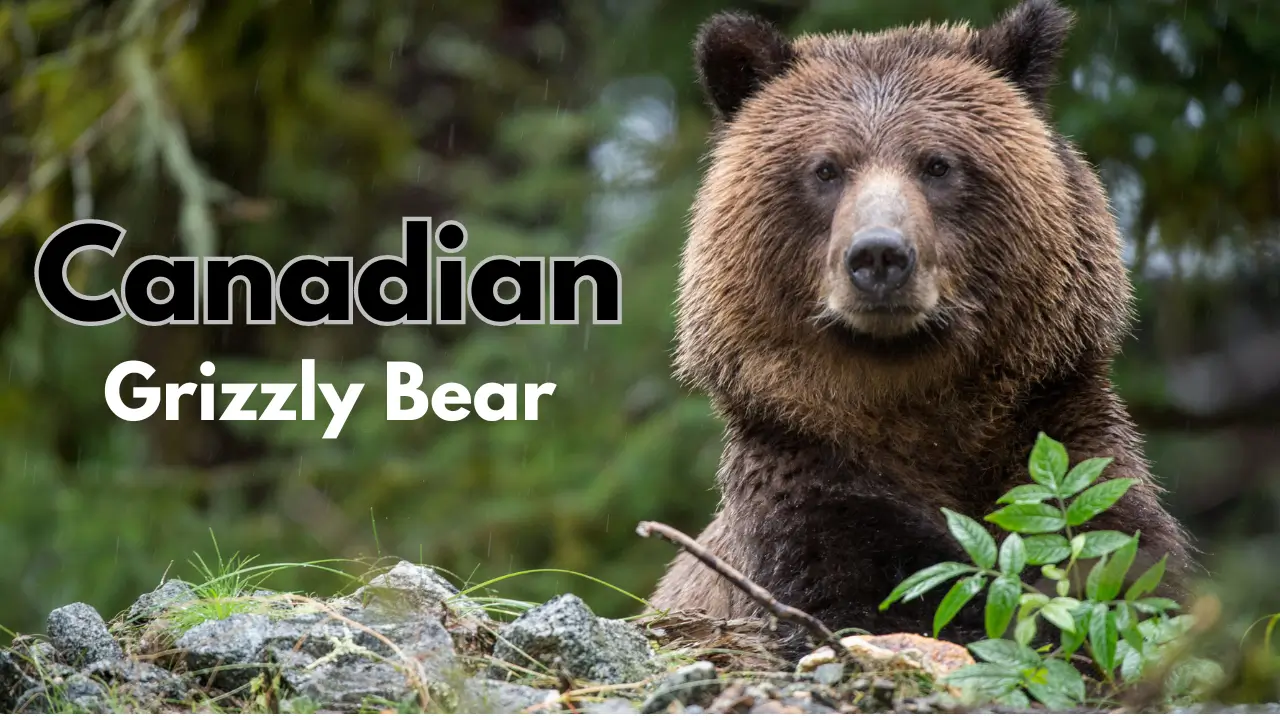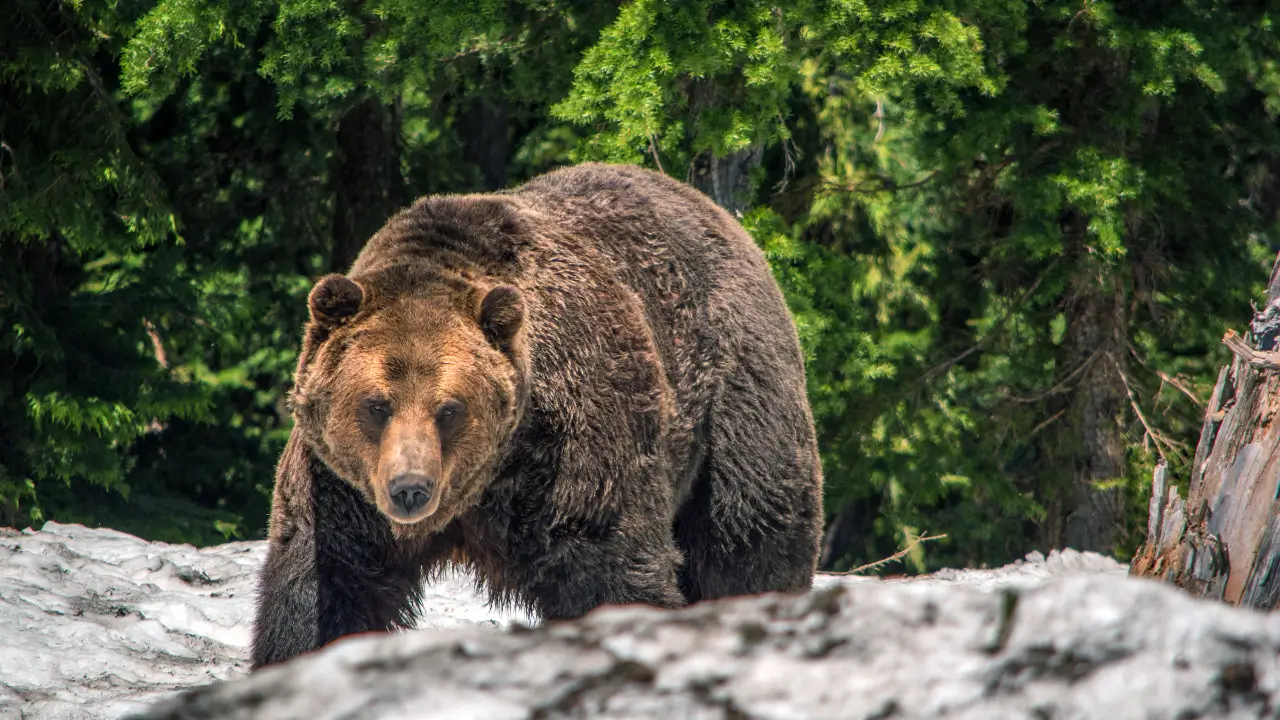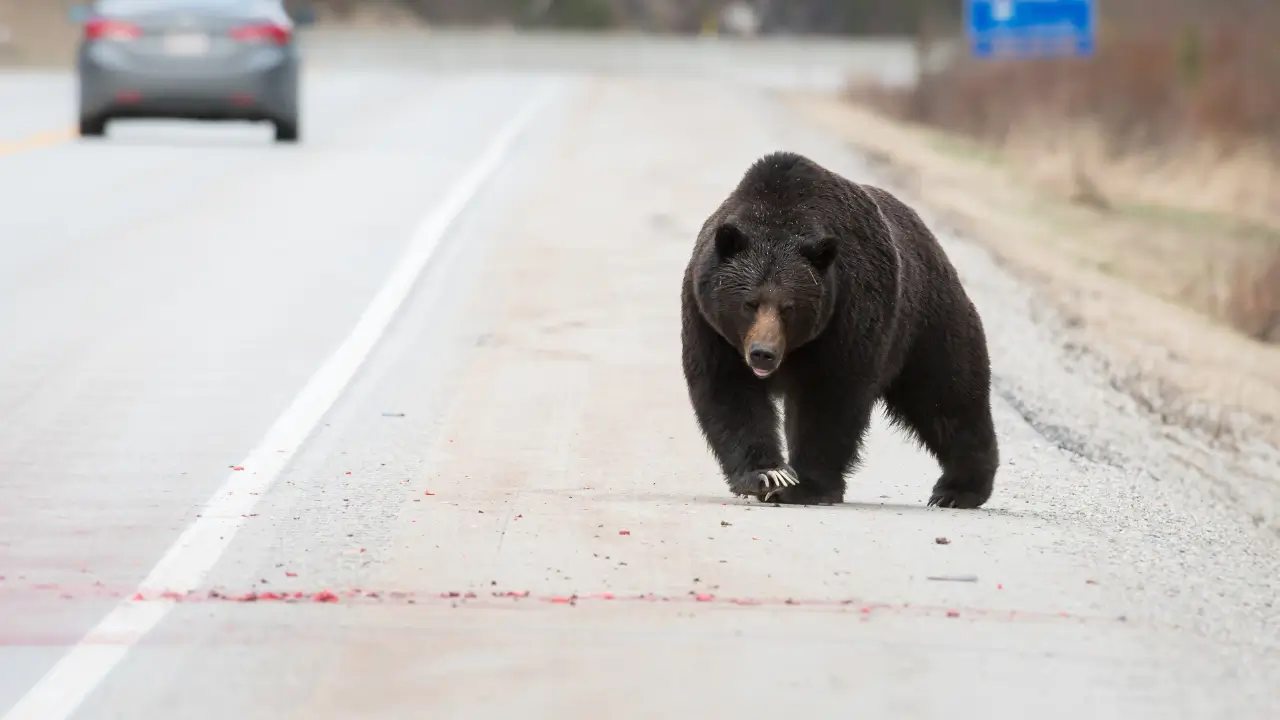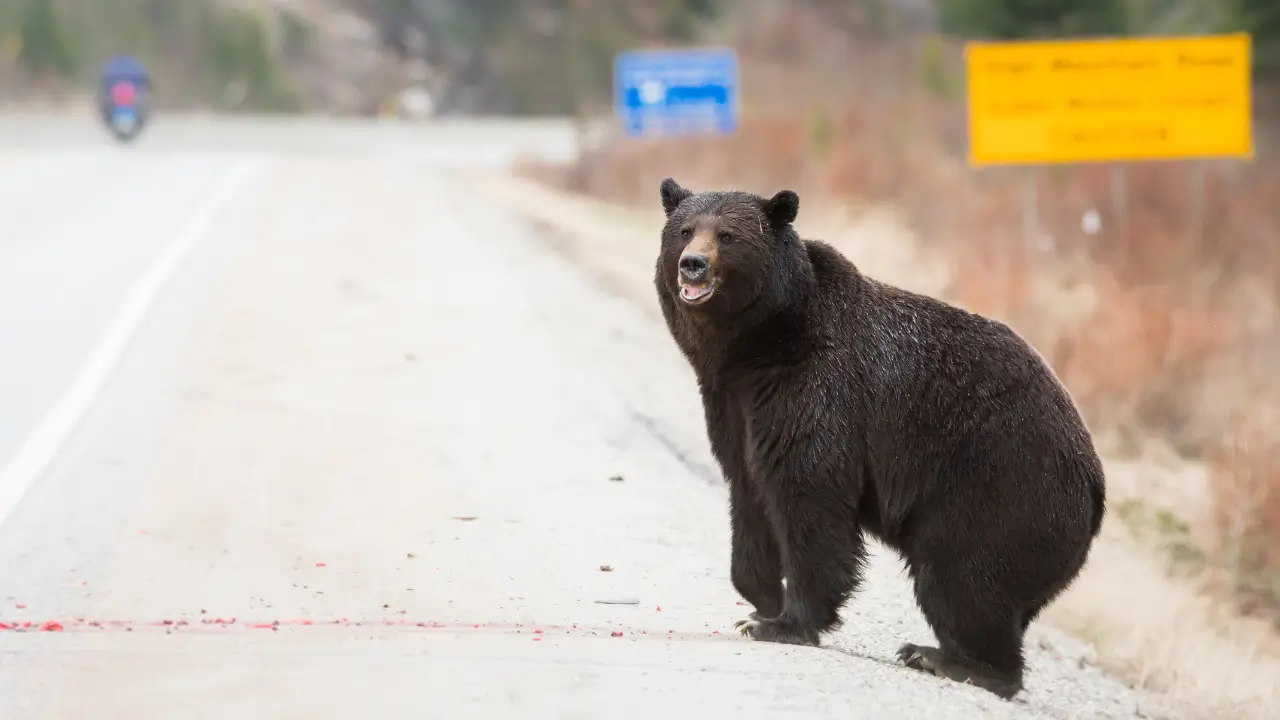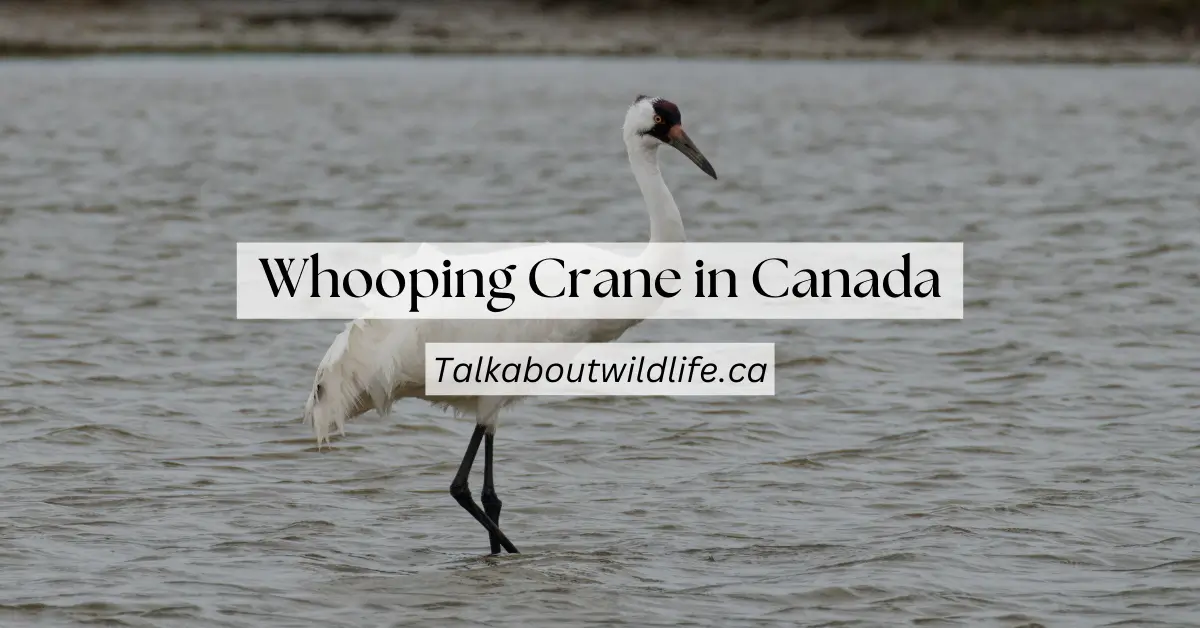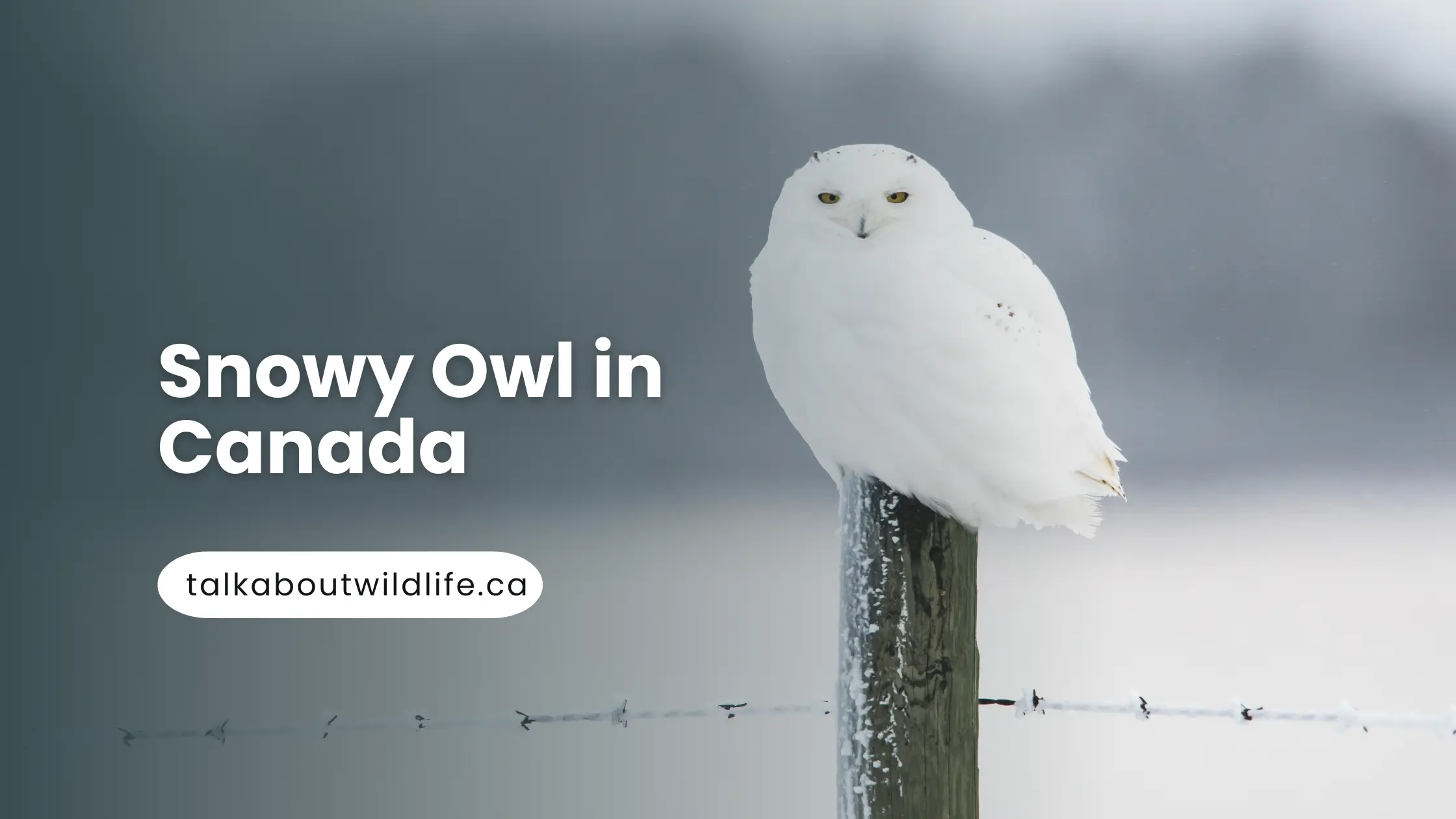The grizzly bear is a big, strong animal that lives in the wild places of Canada. You can identify them by their big shoulders that stick up and their long, curved claws. They live alone and walk around the forests and mountains looking for things to eat like plants, berries, fish, and sometimes bigger animals. Despite the huge size of grizzly bears, they are usually shy and try to stay away from people. When you go to where grizzly bears live, you must be careful and keep a safe distance from them.
Canada holds about 25,000 grizzly bears, making it home to around 60% of the entire grizzly bear population in North America. The grizzly is an official provincial mammal in Alberta and an extremely important species for Canadian wildlife and protected area management.
Physical Characteristics and Behaviour
Here are some physical characteristics of these mighty beasts that raise curiosity inside you for seeing them.
| Features | Relevant Information |
| Scientific Name | Urus Arctos |
| Life Span | Average is about 20 – 30 years |
| Mass | Average weight of males is between 180 – 270 kg Female’s average weight is between 100 – 150 kg. |
| Diet | Fresh shoots of grasses, Bulbs, Roots, Berries, Some insect species, Rodents and domestic animals |
| Height | Approx 0.9 – 1.5 meters When standing they can reach up to 2.7 meters standing on their legs |
| Habitat | Dens in dense forests, Woodlands, Alpine meadows and Prairies |
| Role in Ecosystem | Seed distributors in the ecosystem, Increased species richness, and facilitation in nitrogen recycling |
| Status of specie | Of Special Concern |
Interesting Characteristics of Grizzly Bears
The most fascinating characteristics that will provoke you to see them with your eyes and capture their attractive things are:
Aggression
Canadian grizzly bears tend to be larger and more aggressive than their counterparts in the United States.
Shoulder Hump
They have a distinctive hump on their shoulders, which is a mass of muscle used for digging and turning over rocks and logs.
Adaptation to Cold
Grizzly bears in Canada’s northern regions have longer fur and larger humps to better withstand the cold temperatures.
Salmon Feeding
In coastal areas of British Columbia, grizzly bears are known to feed on salmon, which plays a crucial role in their diet and life cycle.
Migration
Grizzly bears in Canada have been known to travel hundreds of miles in search of food and suitable habitat.
Isolated Nature
They are isolated animals, except during mating season or when a mother is caring for her cubs.
Sense of Smell
Grizzly bears have an excellent sense of smell, which they use to locate food from miles away.
Speed
They are capable of running at speeds of up to 45 km/h over short distances.
Cultural Significance
In some remote areas of Canada, grizzly bears play an important role in the cultural traditions and beliefs of domestic communities.
Sightseeing of Grizzly Bears in Canada
Following are some places to see these giant animals roaming in Canada despite their reduced number.
| Direction of the Country | Places Where Grizzly Bears are Found |
| Western Territory | Alberta, British Columbia, and Yukon |
| Northern Territory | Nunavut, Central regions of Arctic |
| Central Territory | Manitoba |
National Parks in Which Grizzly Bears Are Found in Canada
These bears are mostly found in the mountain regions of western and northern territories but are distributed to boreal forests and alpine regions of the country.
- Banff National Park
- Yoho National Park
- Jasper National Park
- Kootenay National Park
- Mackenzie Mountains
- North Slave Region
Ideal Time to See the Grizzly Bears
They can be sometimes difficult to spot and prefer some isolated areas to live and spend life, but they can be seen and photographed at the following times:
| Season | Places to See Them |
| Springtime | Wetland around meadows covered with grass |
| Summers | In the forests and tundra |
| Fall | In forests and tundra (Depending on abundance of Salmons in the region) |
| Winters | Inside their Dens |
Precautions to be Taken When Seeing Bears
Some precautions must be taken during your visit because bears are violent animals and can attack a person unexpectedly.
Stay Aware
Be cautious of bear signs.
Make Noise
Talk, sing, or wear bells.
Carry Bear Spray
Have non-lethal bear repellent accessible.
Avoid Surprising
Don’t hike alone and be cautious around blind spots.
Keep Distance
Stay at least 100 yards (91 meters) away.
No Food Odors
Properly store all scented items.
Know Encounter Response
Don’t run, back away calmly, and use bear spray if charged.
Follow Regulations
Follow the local bear safety guidelines.
Grizzly bears usually stay away from humans and avoid their interaction with mankind. Therefore, it is important to visit at the right time and the right place for sightseeing.
